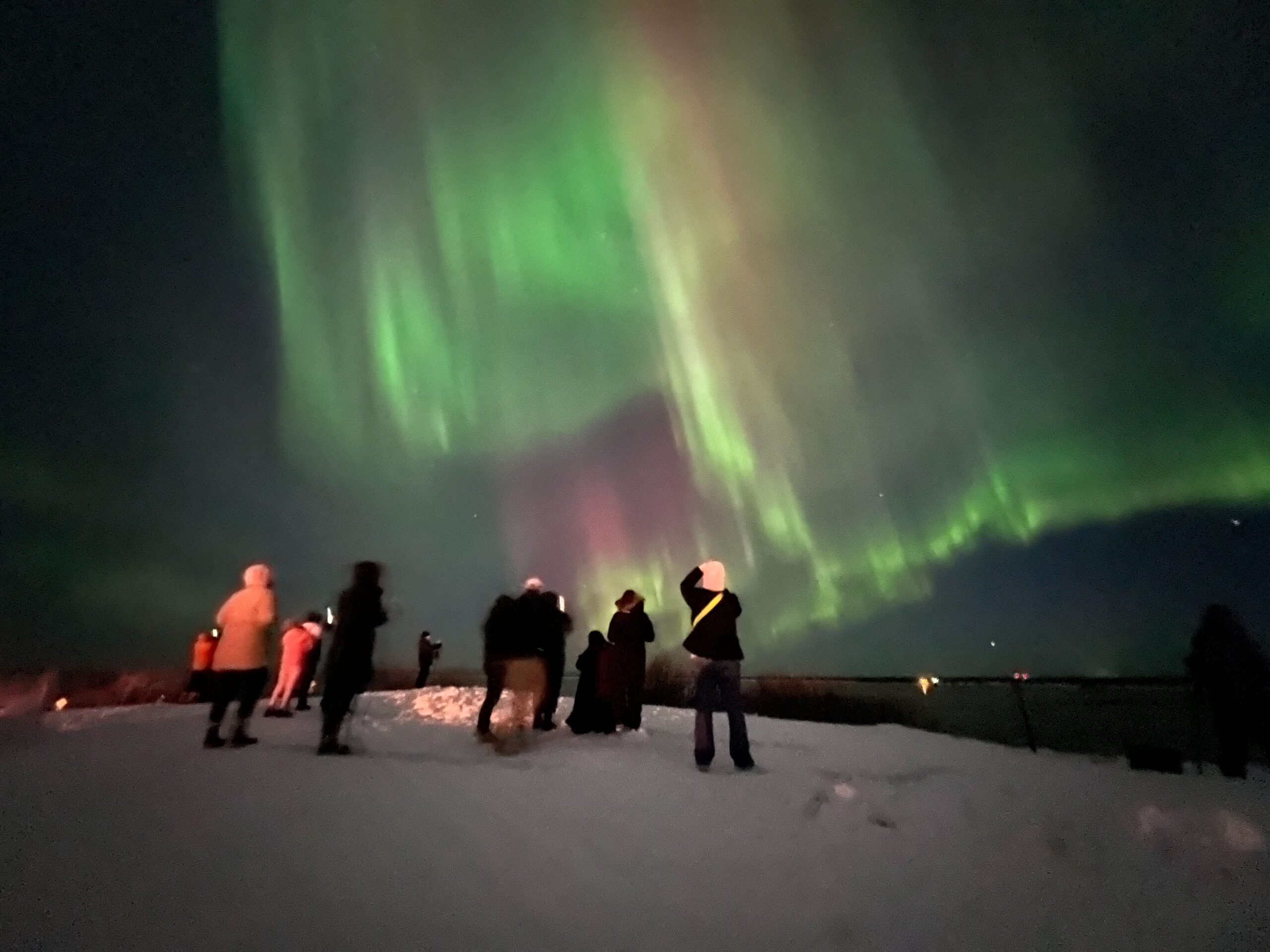ARTICLE AD BOX
 Anchorage residents observed an unusually beardown aurora borealis from Point Woronzof connected Sunday, Feb. 26, 2023. (Matt Faubion/Alaska Public Media)
Anchorage residents observed an unusually beardown aurora borealis from Point Woronzof connected Sunday, Feb. 26, 2023. (Matt Faubion/Alaska Public Media)An progressive aurora borealis is forecast this play owed to aggravated star flares successful caller days. University of Alaska Fairbanks physics professor Mark Conde said nan sun is approaching nan highest of its 11-year activity cycle.
“And that intends that location are galore sunspots connected nan sun, and galore benignant of progressive unstable sunspots,” Conde said. “And correct now there’s a very ample what’s called sunspot group, truthful it’s not conscionable a azygous sunspot, but a full bunch of sunspots successful a group. And successful nan past fewer days, that group of sunspots has released astatine slightest 5 large eruptions of worldly from nan aboveground of nan sun.”
Conde said that power began hitting Earth’s ambiance astir midday Friday, raising nan imaginable for aggravated aurora activity, including accustomed colors.
“You tin get this benignant of humor reddish glow crossed nan entity and its alternatively rare, but rather spectacular erstwhile you spot it,” he said.
Conde cautioned there’s nary guarantee nan aurora will beryllium visible complete Alaska, and not conscionable because of constricted acheronian and imaginable unreality cover.
“Disappointment mightiness beryllium that if conditions go highly active, nan aurora tends to move south,” he said. “Instead of being complete Alaska, it tin move down to Seattle, aliases Oregon, aliases possibly moreover down complete Texas, if it’s really active.”
Conde said he expects nan auroral activity to tally from Friday done Monday morning.
Dan Bross is simply a newsman astatine KUAC successful Fairbanks.









 English (US) ·
English (US) ·  Indonesian (ID) ·
Indonesian (ID) ·